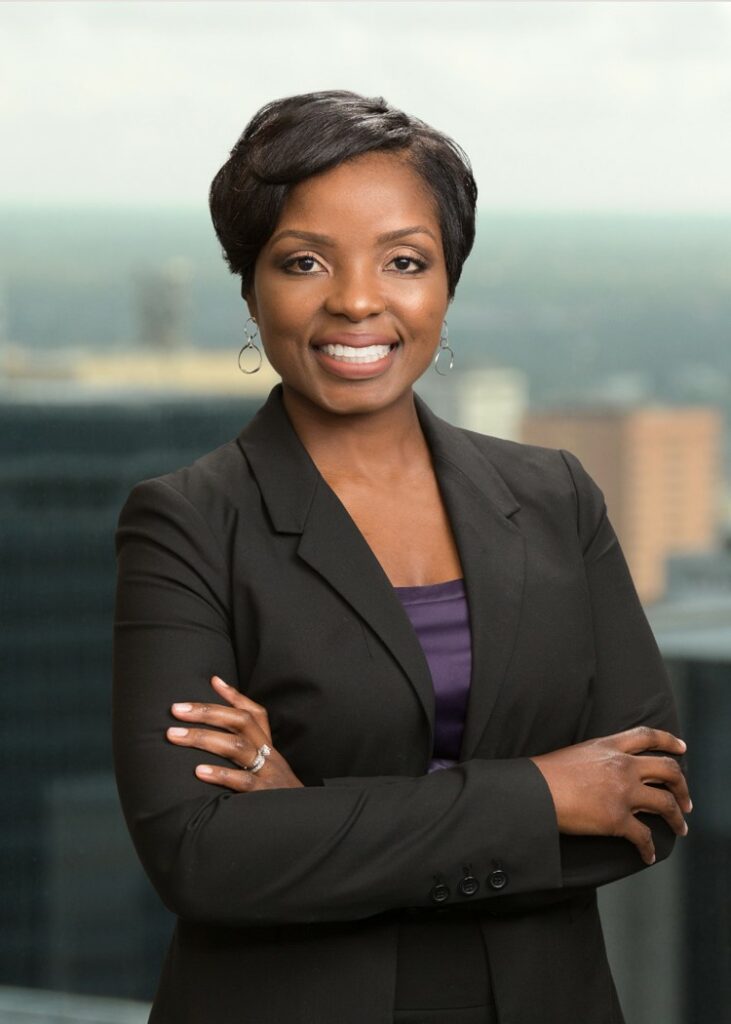Baker McKenzie has named Marredia Crawford as its chief inclusion, diversity and equity officer.
As the firm’s top ID&E official, Crawford, who is based in Houston, joins Baker McKenzie’s global leadership team and will oversee efforts to create better experiences for employees, better outcomes for clients and sustainable change in the industry across all of the firm’s 74 offices, the firm said.
Crawford succeeds Anna Brown, who left the firm in July. Before her promotion, Crawford served as the director of inclusion and diversity for Baker McKenzie’s offices in North and Latin America. She joined Baker McKenzie in 2018 after spending nearly a decade at Bracewell, where she worked in recruiting before eventually becoming a diversity and inclusion manager.

“Marredia has played a crucial role in our diversity, equity and inclusion efforts as a firm in recent years, and helped to drive enormous progress, particularly in North America,” Milton Cheng, Baker McKenzie’s global chair, said in a statement. “She has a proven track record of leadership and a deep-rooted passion for enacting positive, lasting change, and I look forward to the ongoing impact she and the wider ID&E team will undoubtedly make in the years ahead.”
Before working at law firms, Crawford worked in politics as a legislative aide (and eventually legislative director) for a state representative at a time when DEI was not yet official terminology and was viewed mostly through the lens of compliance. Crawford distinctly remembers a constituent calling the office raising concerns about the lack of equity — and basic resources — among schools with large populations of students from underrepresented groups.
“They had less equipment, older books — things of that nature,” Crawford told The Texas Lawbook. “The representative I worked for at the time was on the education committee, so we got calls like that all the time. But one of the things that intrigued me was looking at how things were not equal at all in such an important area as education.”
A native Texan, diversity and inclusion has also been top of mind for Crawford throughout her personal life.
“Growing up, I was frequently in spaces where I was the only Black person [there],” Crawford told The Lawbook. “I was the first Black drum major at my school. When you grow up like that, things become very clear, and you have to assimilate yourself on a consistent basis. It’s very easy to kind of lose yourself a little bit in those spaces. … dealing with different microaggressions and dealing with different things that when you’re younger, you can’t name it but you know something feels wrong.
“There’s a very critical mass at many law firms of people from underrepresented groups,” she added. “My own experience [helps me] understand how people are navigating these spaces.”
Within the last year, Crawford has focused her efforts on leading the firm’s Lawyers of Color conference; embedding ID&E throughout Baker McKenzie’s practice groups; recruiting, retaining and promoting talent; and supporting underrepresented groups.
Crawford said the firm has a goal to hit certain “gender aspirational targets” by 2025 — 40 percent women, 40 percent men, and 20 percent nonbinary individuals among the firm’s leadership committees, candidate pools and promotions. After holding successful conferences in the U.S. focused on lawyers of color and LGBTQ+ lawyers, Crawford plans to expand similar efforts in other countries where Baker McKenzie operates.
“To have people come in the same room to be able to build community and to be able to … talk about their careers, and talk about how they’re experiencing the firm themselves was a huge highlight because it helped build that trust,” she said. “There are so many different things that came from those meetings and those conferences that we are quite proud of, but it’s only because we’ve built this culture of inclusion that people feel safe, that they can speak up and be heard.”
“Inclusion” is a word that the firm thinks of before diversity and equity, so the firm calls its department ID&E because “you have to have an inclusive environment to sustain any kind of diversity,” Crawford said.
“We ensure that people know that it’s not just the responsibility of me and my team [to foster inclusion, diversity and equity], but that it’s really a responsibility of everyone at the firm,” Crawford said. “Everybody plays a role in building in inclusive culture, so that is why we lead with ‘inclusion.’”
Asked how law firms can better retain diverse talent, which has been a common challenge across the legal industry for years, Crawford said focusing on mentorship and sponsorship is just as crucial as inclusion.
“Looking at the data, we know that with people of color, you [used to] start seeing a kind of leaky pipeline around the fourth and fifth year [into an associate’s career], but now it’s more in the third year,” Crawford said.
Beyond formal mentoring programs, Crawford said it’s essential for more senior lawyers to constantly evaluate who they can take under their wing and who they can advocate for, speak highly of or give stretch assignments to.
“What we know is that people who feel like somebody cares and is looking out for them tend to do better,” Crawford said.
Crawford declined to say much specifically about the current challenges for diversity and inclusion departments in light of the Harvard Supreme Court decision, new laws banning DEI offices at public institutions and recent litigation lodged against law firms for DEI fellowships, but acknowledged that they’ve acted as “outside noise.”
“The distraction that some of the outside noise can be is a challenge because then it just kind of takes your focus away,” Crawford said. “But we’re determined to just continue on and stay the course. I think that [if] we make sure we have our T’s crossed and I’s dotted, there’s no need for us — or for anyone else — to cower but just continue to look forward.”
